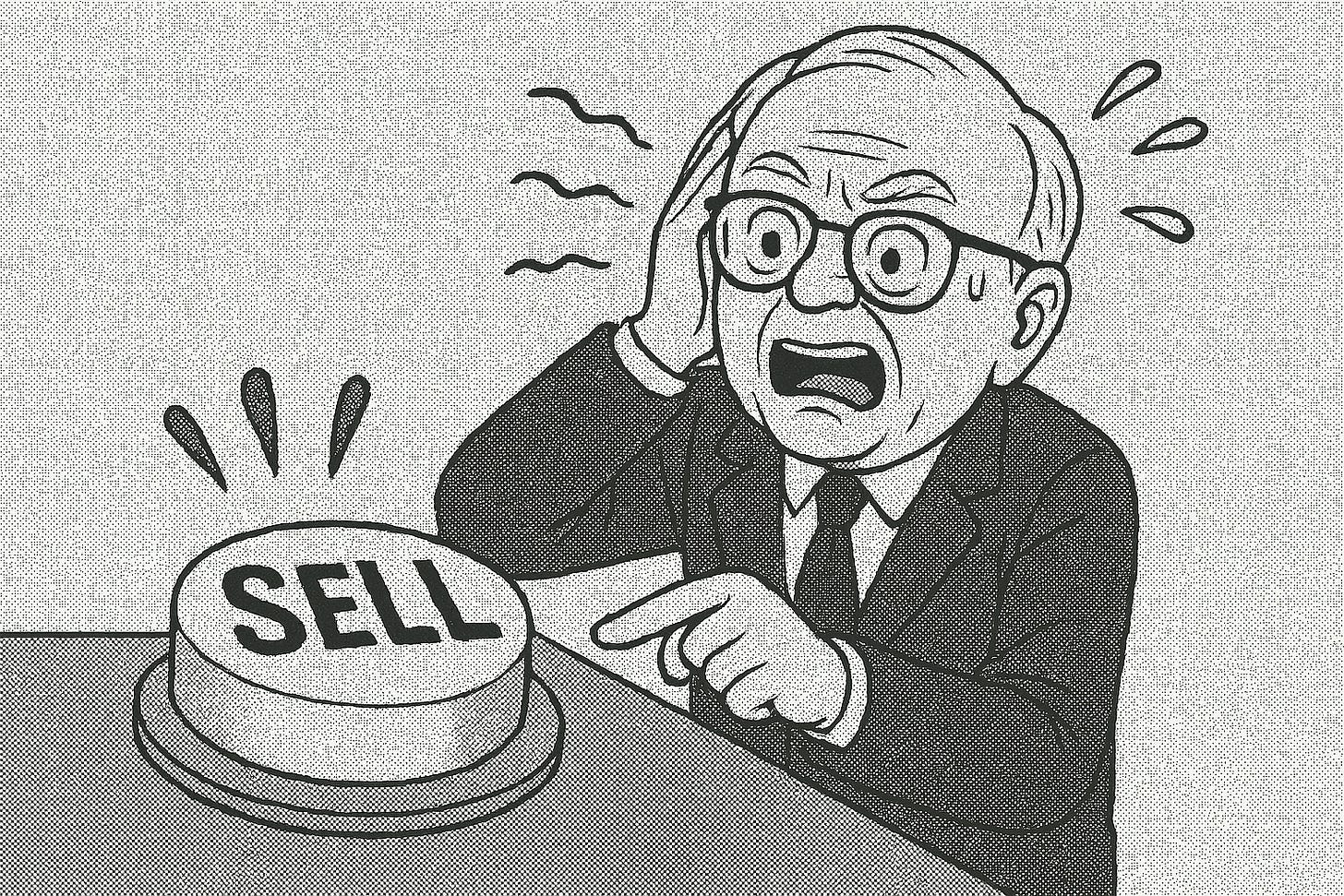How I Decide When to Hold and When to Fold
My Personal Sell Decision Framework and FREE Checklist
To read our full disclaimer, click here.
Most investors obsess over what to buy. But the hardest decision in investing isn't buying, it's selling.
Today, I'm sharing the complete sell decision framework I've refined over years of studying the greats + a FREE Checklist at the end.
Why Selling is the Hardest Decision
The data is sobering: According to a Fidelity study, investors who forgot they had accounts outperformed active traders by 2-3x over a decade.
Just think about that for a second.
Charlie Munger understood this perfectly:
"The first rule of compounding is to never interrupt it unnecessarily."
Yet we're wired to trade.
To "take profits."
To "rebalance."
To do something.
This framework has helped me correct that.
My 5-Layer Sell Decision Framework
Layer 1: The Thesis Test
Before anything else, I ask: Has my original investment thesis broken?
This isn't about stock price. It's about the fundamental reasons I bought:
Has the competitive advantage eroded?
Has management's capital allocation deteriorated?
Has the industry structure permanently shifted?
Example: When Kodak refused to embrace digital photography, the thesis broke. Not because the stock fell — but because management chose to protect a dying business model instead of adapting.
If my thesis remains intact, I don't sell.
Period.
Layer 2: The Quality Check
Next, I evaluate if the business quality has degraded:
Red Flags I Watch:
ROIC dropping below cost of capital for 2+ years
Persistent market share losses to competitors
Increasing capital intensity with declining returns
Management pursuing empire-building acquisitions
Green Flags (I Keep Holding):
Consistent 20%+ returns on capital
Widening competitive moats
Rational capital allocation
High insider ownership
Layer 3: The Opportunity Cost Analysis
This is where most investors get it wrong.
The question I don't ask: "Can I find something better?"
The question I do ask: "Can I find something significantly better after accounting for taxes, transaction costs, and execution risk?"
One stock I do think has been worth selling other positions for recently is this:
Layer 4: The Position Sizing Governor
Sometimes selling is about risk management, not company quality.
I consider trimming (not eliminating) when:
Single position exceeds 30-40% of my portfolio
I'm losing sleep over one holding
But I remember: Every great investor made their fortune through concentration, not diversification. Peter Lynch's Magellan Fund once had 35% in a single position.
If the business quality remains exceptional, I let my winners run.
Layer 5: The Behavioural Audit
This is the most important layer — and the most ignored.
I ask myself brutally honest questions:
Am I selling because the stock price fell? (Fear)
Am I selling to "lock in gains"? (Greed)
Am I selling because I'm bored? (Impatience)
Am I selling because CNBC said so? (Influence)
Studies show 90% of sell decisions are behavioural, not fundamental.
My rule: I write down why I want to sell, then wait at least 48 hours. If the reason still makes sense, I proceed.
Your Implementation Guide
Step 1: Create Your Question Template
✓ I DEFINITELY SELL when:
- Original thesis is permanently broken
- Management loses integrity (fraud, deception)
- Structural industry decline is irreversible
- Company faces existential threat (bankruptcy risk)
✓ I CONSIDER SELLING when:
- Valuation reaches truly absurd levels (50+ P/E for average business)
- Better opportunity with significantly higher expected returns
- Position size creates unacceptable portfolio risk
✓ I NEVER SELL when:
- Stock is down 20-30% but thesis intact
- Financial media is negative
- I'm "taking profits" with no reinvestment plan
- Short-term earnings miss expectations👍 If this changed how you think about investing, a quick like and restack really helps us carry on making content for you!
The Bottom Line
This sell framework is just one piece of my investment process.
If you like the way we think and want to see how we invest, subscribe here and become a paid subscriber to see the stocks we invest in and with our personal reason behind each position.
Until next week,
Dom
Schwar Capital
📌 PS - If you found this post valuable, please consider sharing it with someone who might benefit from thinking differently about cash and opportunity. 🙏
Thanks for reading Schwar Capital! Subscribe for more content like this.
Disclaimer: The content provided in this newsletter is for informational purposes only and does not constitute financial, investment, or other professional advice. The opinions expressed here are those of the author and do not necessarily reflect the views of Schwar Capital. Investing involves risk, including the possible loss of principal. Past performance is not indicative of future results. The author may or may not hold positions in the stocks or other financial instruments mentioned. Always do your own research or consult with a qualified financial advisor before making any investment decisions. To read our full disclaimer, click here.





I think finding a good entry is easier than selling.